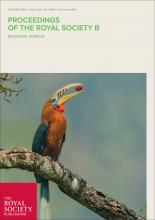Recombination in the eggs and sperm in a simultaneously hermaphroditic vertebrate
Abstract
When there is no recombination (achiamsy) in one sex, it is in the heterogametic one. This observation is so consistent that it constitutes one of the few patterns in biology that may be regarded as a ‘rule’ and Haldane proposed that it might be driven by selection against recombination in the sex chromosomes. Yet differences in recombination rate between the sexes (heterochiasmy) have also been reported in hermaphroditic species that lack sex chromosomes. In plants—the vast majority of which are hermaphroditic—selection at the haploid stage has been proposed to drive heterochiasmy. Yet few data are available for hermaphroditic animals, and barely any for hermaphroditic vertebrates. Here, we leverage reciprocal crosses between two black hamlets (Hypoplectrus nigricans, Serranidae), simultaneously hermaphroditic reef fishes from the wider Caribbean, to generate high-density egg- and sperm-specific linkage maps for each parent. We find globally higher recombination rates in the eggs, with dramatically pronounced heterochiasmy at the chromosome peripheries. We suggest that this pattern may be due to female meiotic drive, and that this process may be an important source of heterochiasmy in animals. We also identify a large non-recombining region that may play a role in speciation and local adaptation in Hypoplectrus.


Leave a Reply